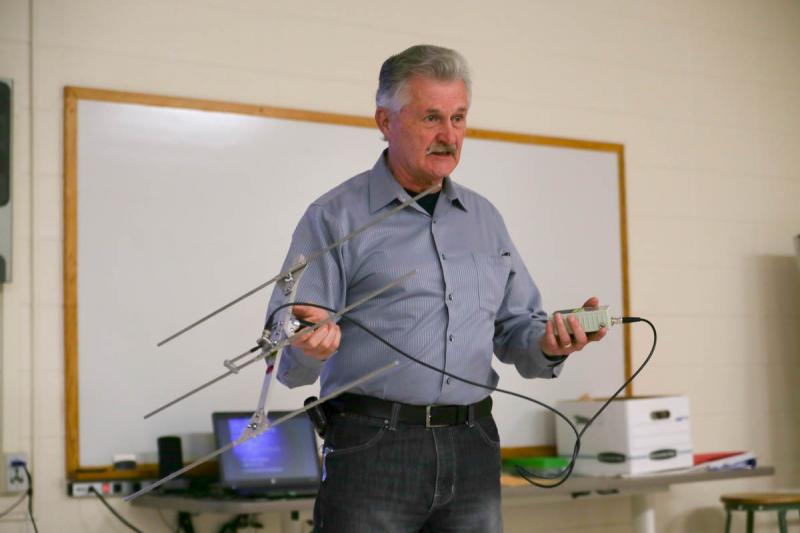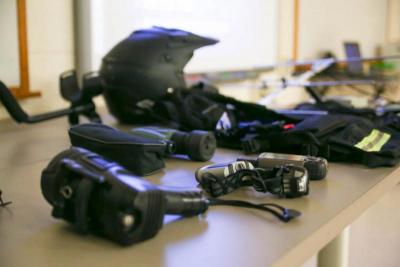'Search and Rescue' seminar for families of mentally disabled, elderly
Families with elderly or mentally disabled members have a new tool to keep their loved ones safe.
Dartmouth’s Special Education Parent Advisory Council hosted the “Bring Our Loved Ones Home: Search and Rescue” seminar on Thursday, Jan. 28. Special guests Patrol Officer Scott Affonce, Patrol Officer Justin Fonseca, and former Marshfield police officer Ralph Poland answered questions and explained the process involved in finding a loved one who has gone missing, and resources to keep family members with a tendency to stray safe.
Elderly or mentally disabled individuals are some of the highest at-risk populations for running away or wandering off, particularly those with autism, down syndrome or dementia. According to Affonce, 60 percent of dementia patients will wander and not be able to find their way home. Yearly, about 127,000 individuals are lost. Of those, 34,000 are reported to the police and 13,000 are never found. Ninety-two percent of parents with an autistic child are at risk for losing their child.
In the event that a loved one should go missing, Affonce advised attendees to immediately call 911.
“Some people, they call and they sound like they're bothering us. You're not bothering at all. I signed up for this to help," he said.
After calling 911, if a family member wishes to go out looking for the missing person, someone else should remain at the house in case they should return, with a picture of the missing person to aid the search and rescue team.
Affonce says that some families wait to call the police, hoping that the person will return to the house or that they'll be able to find them on their own. They’re also concerned about being judged or being deemed as unfit caretakers.
"No one is going to say ’you should've been watching that child,'" Poland said.
“No harm, no foul if they come right back home,” Affonce added. “The average person can walk two miles an hour, and some people wait an hour to call us and go look for them themselves."
There are various tools that are utilized to help trace missing individuals, from radio frequencies to cellular GPS. However, GPS is not always accurate and can't attend on satellite technology. Natural barriers can block their signals.
SafetyNet by LoJack is a tracking system that offers families “a solution for finding and rescuing people with cognitive conditions that may cause them to wander and become lost.” Clients of SafetyNet wear a bracelet that emits a radio frequency that is unique to each wearer. If the person goes missing, trained personnel are dispatched to use the safety net tracking equipment to locate the missing person, said Poland.
Upon learning about SafetyNet, Poland introduced the program to the town of Marshfield. Within a week of the program being launched, 13 kids were registered. The program has been in effect for two years with no incidents.
Where GPS-based technology signals can be disrupted fairly easily, ”Radio frequency goes through everything" and can even transmit through mud, water and large buildings, Poland said.
Some of the issues with “traditional" search and rescue methods are that it’s time-consuming, expensive and utilizes much manpower. During his time on the Marshfield police department, Poland recalled a search for an elderly man with Alzheimer’s. The search involved 10 police officers, four firefighters, an environmental protection officer, a state trooper, a K9 team, an ambulance, a helicopter, and cost the state $1 million. The search concluded after 22 hours of searching.
Since the implementation of SafetyNet in Marshfield, only four individuals have gone missing. All were found, the shortest search time being seven minutes and the longest being 22 minutes.
"SafetyNet saves for less that $1.50 a day,” Poland said.
“That's nothing compared to saving your child," said a teary-eyed attendee.
The SafetyNet kit comes with the bracelet, eight replaceable straps, a specialized knife for breaking the straps and batteries, which should be tested every day. The straps are made from the same material as seatbelts, so that individuals wearing them cannot easily remove them. SafetyNet bracelets are waterproof up to 18 feet underwater, and each bracelet has its own individual frequency and ID number so that no two signals can be mixed up.
SafetyNet is currently not covered by insurance and costs $175 for initial enrollment. However, House Bill 913 is before the Committee on Financial Services to “provide full coverage… for insured individuals who are diagnosed by a licensed physician with dementia, Alzheimer’s disease, or are to some spectrum disorder, to obtain a Technology-Assisted Tracking Device.”
For more information, visit SafetyNet by LoJack or call 877-434-6384. To speak to Patrol Officers Affonce and Fonesca, call 508-910-1735.

















